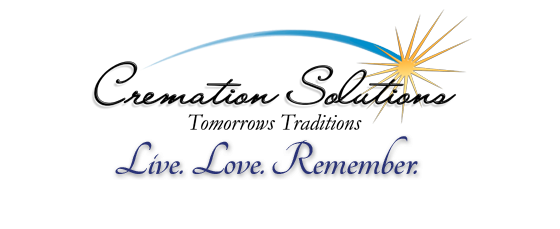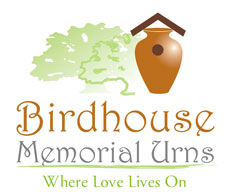How to Market to the Scattering Family
Cremation Solutions estimates that of those families that are now 32% choosing cremation, 40% are selecting to scatter as the final disposition. If we are not offering products for these families we will both loose. I have been to scatterings and heard such comments as "What you spent thousands of dollars and they gave back moms ashes in a cardboard box". If you learn one thing in the following paragraphs, learn that giving remains back in the cardboard or plastic containers is a poor reflection of your services. If you cant get them to purchase a container it is better to have a dignified temporary container built into your price. Many state laws now allow the family freedom to manage the disposition of the cremated body themselves. The services of the funeral director are often not requested in either arranging or performing the final disposition. We at Cremation Solutions believe there is an opportunity to not only get involved in the scattering ceremony, but to create previously untapped revenue. It can be challenging but very rewarding.
The Challenges
The challenge to the funeral director in serving a scattering family is two-fold. The first challenge is within the individual funeral director. The choice of scattering is regarded by some as a bad mistake and an act of disrespect. This judgment may indeed come out of a heart of concern for the familys ultimate well-being. Nevertheless, the right of the family to chose must be honored. For them, scattering is no less an act of disrespect than any other form of disposition. As funeral directors, we withhold our personal judgment, and support the family in carrying out their choice of disposition. Our experience has taught us the value of marking the death of a significant person with ceremony or ritual, however small or simple. We understand the importance of keeping something that holds for us memories of the deceased. We know the comfort of having a place to go which represents for us the presence of the one who has died. As funeral directors, we are in the memory business. Correct information delivered in a caring and non-judgmental way will provide all the influence necessary for the family to make their decisions.
Opening The Door
Funeral directors are occasionally confronted with a person who is guarded, defensive and simply not open to any discussion at all. I have seen it helpful in such instances to make a simple statement of intent, such as, "Mr. Jones, I completely honor your right to make these decisions. Because of that, I feel it is my professional obligation to make sure you have all the facts..." Such a statement used at the beginning of an arrangement conference often precludes resistance from the family. By "setting the agenda" for the time spent with a family during the arrangement conference, a counselor can more easily accomplish the task of providing information and assisting a family in making a decision that is best for them. If the counselor is equipped with some well-crafted questions, opening the door to exploring the possibilities rising out of the familys decision to scatter is easy. Here is an example of such a question, asked after learning of the familys intent to scatter: "Will you be doing a complete or a ceremonial scattering?"* This question is designed to be a little ambiguous, so that it creates the question in the mind of the family, "Whats the difference?" This opens the door to talk about all of the things we know are so important: doing something, keeping something, having a place to go.
The essential issue around which a discussion of scattering should revolve is the fact that scattering the cremated body is an irreversible act. All the options will, in one form or another, address this issue in a positive and healthy way, and be focused on the ultimate best interests of the family as a whole.
Options
Do something
A vital aspect of the grieving process is involvement: doing something. A ceremony or gathering provides a way to express and absorb the loss as a family and community. People need to participate, whether formally or informally, whether in a gathering or privately. The question, "Will you be doing a complete or partial scattering?" addresses the issue of what the family (and individuals) will be doing. Will you conduct a memorial scattering" rather than "ceremonial scattering." Will it be a public or private ceremony. This is what crafting a question is all about: the very deliberate use of words to create an opening for exploration. The point is to enter into a discussion of what the family intends to do in honoring the deceased.
Will the family gather together at the time of the scattering? Will more than one person scatter the cremated body? Will the gathering be at the place of the scattering or somewhere else, either before or after? Will they do more than one scattering if there are relatives or friends in another part of the country? If people know the date and time the scattering will occur, they can then take that time to honor the memory of the deceased in their own way. If the family is adverse to the idea of any gathering or ceremony, perhaps suggest the importance of providing a way for other family members or friends to express their feelings. This can open the door for funeral directors to get involved. We can offer many options, such as: Placing announcements in the paper. Creating a printed program and making the needed contacts. Like any service we can use our experience and know how in creating a meaningful ceremony. This is our greatest asset and the families we serve are willing to pay for it. We can even get involved in the receptions that follow. We are now event planners, go ahead and get the caterer, tent and tables. Get the family involved and try to keep a theme with the deceased in mind.
Keep something
The question, "Will you be doing a complete or ceremonial scattering?" also opens the discussion of keeping something that holds memories of the deceased. A "partial ceremonial scattering" could be defined to the family as when not all of the cremated body is scattered, but some is retained by one or more members of the family. Will the ashes be scattered in different locations. Who will scatter. Will it be a group scattering? All these questions can open the door to talk about the many options families have for services and products. Cremation Solutions and other vendors to the funeral industry have been inventive and prolific in providing ways to remember. Three popular product types that relate specifically to families that desire to scatter are scattering urns and keepsakes and keepsake jewelry. Scattering urns are designed to be functional in two ways: they facilitate the scattering by being easy to pour from. Their shape allows the cremated remains to be easily emptied from the urn. The location of the scattering sometimes determines the style of scattering urn to be used. The most popular location is over the water and there are many water soluble urns that are specially designed for this purpose. The second most popular location is on the family property. Birdhouse memorial urns are a great option for these families because they also provide a memorial that will provide comfort for the years to come. Some scattering urns can be kept as an art piece or provide a place to keep mementoes of the deceased or a vase. Because scattering is irreversible, keeping portions of the ashes is even more important to the family that chooses to scatter. If families relocate, they can be left with feelings of abandonment. Keepsake urns and jewelry can provide the comforting knowledge that part of the earthly remains can always be kept close. They come in many sizes and styles and often match the style of the scattering urn. Keepsakes can be used to contain the ashes as well as jewelry, hair or other mementos of the deceased. One way to inform families about the different options regarding these products, is to display them in a way that communicates their function. Birdhouse memorial urns should be displayed as both a scattering urn and as a "Memorial Birdhouse" to show its final and ultimate function. Display a scattering urn as a vase, with a flower arrangement in it. Perhaps put next to it a picture of a scattering ceremony using that urn. Display a keepsake urn with a wedding ring. Display keepsakes of the same design as a larger urn together with that larger urn. Keepsake jewelry can be displayed using partial mannequins or with photographs showing someone wearing the pendant.
Have a place to go
The important issue here is to have a specific place to go that is a touch-point of remembering, a place to visit that holds significance for both the deceased and the survivors. A poignant demonstration of this fundamental human need is seen in the makeshift memorials along side highways where there has been a fatal accident. If the family will be scattering in a cemetery garden or at some location that has particular meaning, this need is met nicely. If the scattering is done at sea, perhaps a point on the coast could become that special place to go. One sea captain I know always gives the family a small nautical chart with the location of the scattering marked on it, with approximate latitude and longitude. Knowing the precise location amidst miles and miles of ocean can be comforting. Another idea is to create a monument (however great or small) in honor of the deceased in a significant location. "Birdhouse Memorial Urns" are the only scattering urns that can also serve as a Memorial.
In Conclusion
I have seen how entering into such discussions with families can result in their desire to have the funeral director more involved in the actual service. Often it results in increased sales of merchandise. But always, building a relationship of trust and concern has effects far beyond the walls of the funeral home. These ideas and suggestions will gradually lead to increasing the bottom line on the cremation business you do, which is important. But the biggest benefit is that they will help you serve families in a conscientious and compassionate way, thereby increasing your reputation and good will in your community. This is the intangible revenue that builds a solid foundation, ensuring continued success in a challenging profession.
Resources for Funeral Professionals
There are no products matching the selection.







